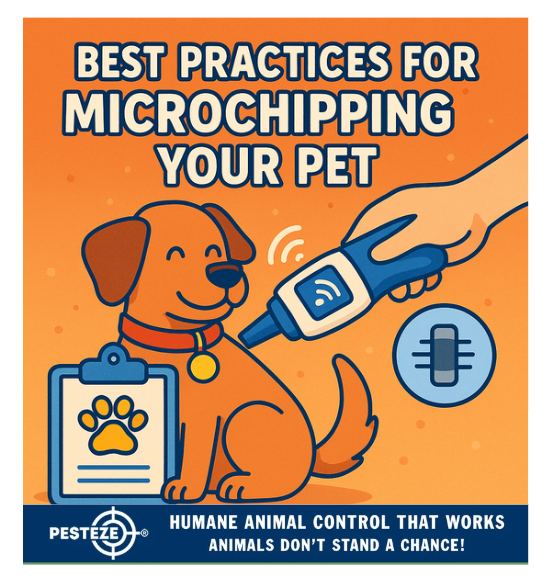BEST PRACTICES FOR MICROCHIPPING YOUR PET

BEST PRACTICES FOR MICROCHIPPING YOUR PET
SUMMARY
Microchipping is one of the most reliable ways to ensure your pet can be identified and returned if lost. This guide covers best practices for microchipping, from the procedure itself to maintaining updated information.
FEATURES
-
Safe and simple procedure: Quick, minimally invasive, and done by vets.
-
Permanent identification: Microchips last a lifetime and can’t be lost like tags.
-
Register immediately: Ensure your chip is linked to your contact info.
-
Keep details updated: Update records after moving or changing phone numbers.
-
Combine with collars: Microchips work best with visible ID tags.
-
Check regularly: Have your vet scan the chip during yearly visits.
GUIDE DESCRIPTION
Each year, millions of pets go missing, and many never find their way home. Collars and tags can break, fall off, or fade, but a microchip provides permanent identification. The small chip, about the size of a grain of rice, is implanted under the skin, usually between the shoulder blades. It contains a unique identification number that can be scanned by veterinarians, shelters, and animal control officers.
The procedure itself is safe and simple. A veterinarian uses a needle to insert the microchip just beneath the skin. The process is similar to a vaccination shot and takes only seconds. Most pets experience minimal discomfort, and the chip remains in place for life without needing replacement.
However, the chip is only useful if the ID number is registered. After implantation, it’s essential to register your pet’s microchip immediately with a national database. Without registration, the chip won’t link back to your contact information, making it ineffective.
Equally important is to keep your contact details updated. If you move or change your phone number, log into the database and make updates right away. Outdated information is one of the main reasons microchipped pets aren’t reunited with their owners.
While microchips are permanent, they work best when paired with visible ID tags. If someone finds your pet, a collar with your phone number makes returning them much faster than waiting for a microchip scan. Microchips serve as a backup in case collars or tags are lost.
It’s also smart to check the chip regularly. Ask your veterinarian to scan your pet’s microchip during annual checkups to ensure it is still readable and has not migrated under the skin. Routine checks provide peace of mind that the chip will function when needed.
By following these best practices, you maximize the effectiveness of your pet’s microchip, giving them the best chance of being returned if they ever get lost. It’s a simple, affordable, and potentially lifesaving step every pet owner should take.
- Saneeth Thota


Comments 0